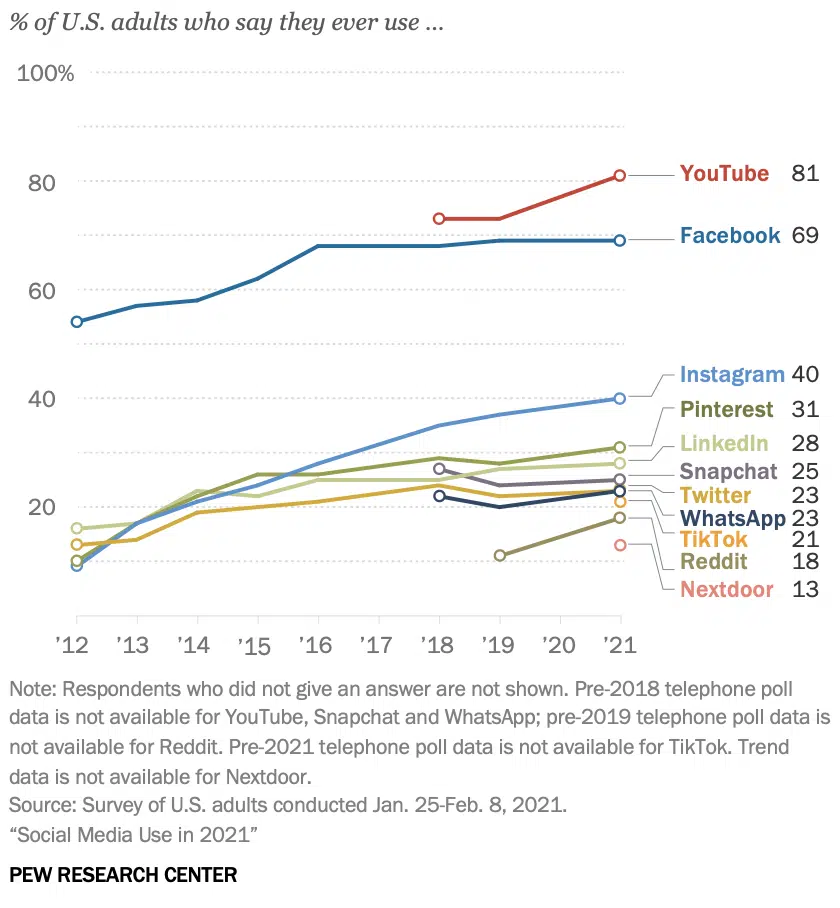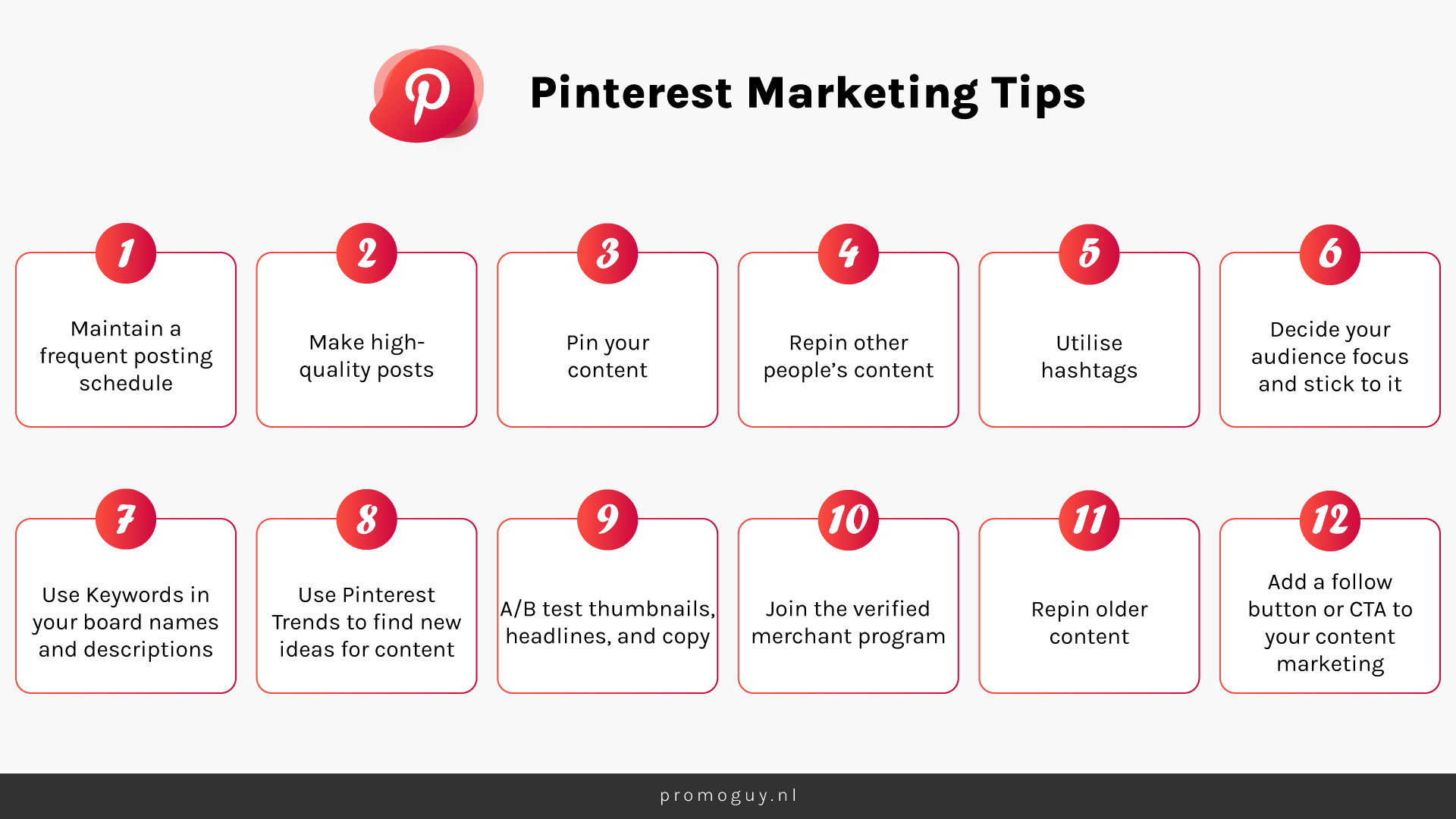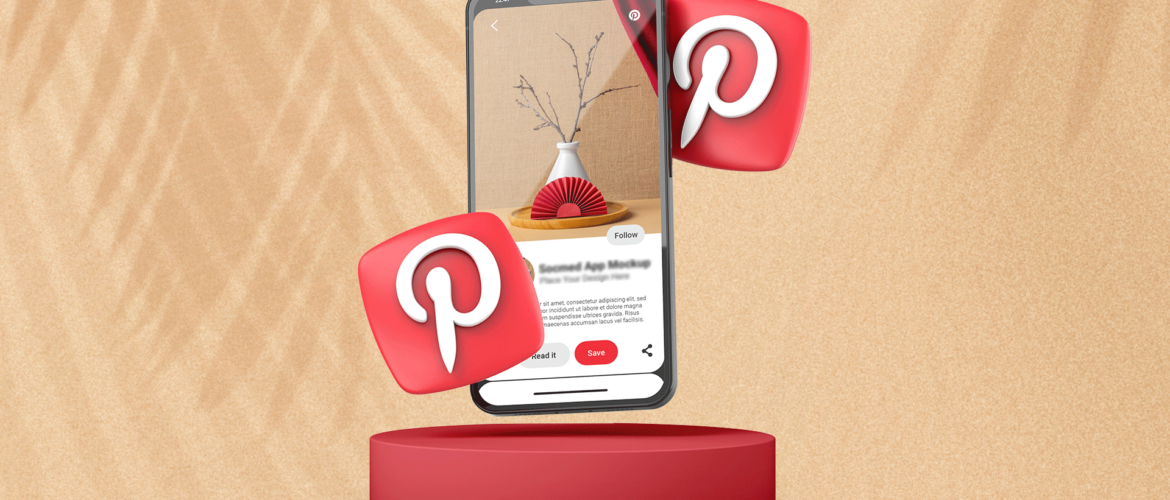It’s often easy to overlook a platform like Pinterest but one should never forget that it has over 482 million users. Moreover, the high-performing content on Pinterest appears to be non-branded (96%), with over 80% of users making a purchase at some point. This opens up many avenues for new businesses to penetrate the market, which is why this article will discuss a beginner’s guide to Pinterest marketing.
That said; if you’re looking for help with your social media content and marketing, check out our Paid Social services or any others that might interest you. We’ve worked with 100s of satisfied clients and we’d love to see what we can do for you. Click the link below to get started.
Pinterest Marketing Made Easy
Pinterest is a high-conversion platform where the majority of users find something they want to spend money on. On top of that, the concentration of the market segment slants towards purchasing behaviour. The design of the platform reinforces these behaviours due to its mechanics.
Pinterest users create boards that embody a common theme and pin items of interest to it. This system itself is conducive to marketing and creative content work. As an online retailer or sole proprietor, you can make use of the platform’s features to create an enticing product portfolio that users can scan through.
There are also numerous tools you can use to help elevate your Pinterest content:
- Pally: A great tool for scheduling Pinterest and Instagram posts. Schedule your content in advance and preview it to make sure it’s coming out right. Not only does it integrate with Canva, but it also provides the ability to plan out your hashtags.
- Tailwind: Much like Pally, this is great for posting and scheduling. What sets it apart are features like smart scheduling that posts when your audience is most active and the ability to monitor communities of creators to gains stats and insights.
- Viraltag: A tool that helps collaborate on social media campaigns on Pinterest. Manage multiple boards and accounts while also using an in-built image editor. Another feature that sets it apart is the ability to automatically recycle best-performing posts to gain more traffic.
So let’s discuss how you can leverage your Pinterest board and who you’ll be interacting with.
Pinterest Aesthetic & Demographic Factors

Pinterest usage resides somewhere between that of Instagram and LinkedIn. 34% of Pinterest users live in rural areas, 32% in the suburbs, and 30% in urban areas as of the last count. On top of that, the most active user base appears to be around media age 40 (elder millennials). 38% are 50 to 65-year-olds. These factors make it an interesting mix of people with diverse interests.
Nearly 50% of Pinterest users are “light” users who log in weekly or monthly. The die-hard daily users are rarer but the demographic is also gears itself towards buying behaviour. 7.3% are heavy users who engage with the platform constantly, the way an Instagram user does.
This is due to how users tend to interact with Pinterest with a direct purpose: either product research or educational content. It would be advisable to understand that you will not get the same type of user as on high-engagement platforms. You may, however, get better conversions since users seem to be more dedicated to purchase behaviour.
The most popular topics on Pinterest in 2023 were:
- Home Decor
- Gardening
- Fashion and costumes
- Home appliances
- Food and Drink
- Parenting
Trends can also vary based on seasonal demands, so keep an eye out for the holidays.
How to Get Followers on Pinterest
If you’re wondering how you can get on the Pinterest trending page, here are the key ways:

Posting regularly and posting quality content both help you get on the trending page, which exposes you to new potential followers. In terms of quality, images that are shot with good equipment and with artistic angles do demonstrably better.
You should regularly pin your content and repin other people’s content to keep up engagement. When you do post or put up content, utilise the right hashtags that will attract your audience. Your board names and descriptions should also have crucial keywords relevant to your audience for maximum effect. You can use Pinterest Trends to find these keywords and audience trends.
You can also A/B test thumbnails, headlines, and copy by switching them around with alternate ones. That said, sometimes you do everything right but it’s bad timing for your content. That’s why its good to repin older content for a new audience.
Make sure you’re doing external marketing like newsletters and website copy. You can optimise your conversions by adding a follow button or CTA to your content marketing. Lead them to your Pinterest or vice versa (it all depends on where you want them.
Keep in mind that a following on Pinterest is less likely to be as dedicated on other platforms like Instagram. Since most are not there primarily for entertainment, the social media platform has a more functional purpose. However, don’t let that dissuade you since what matters is conversions, not following. Followers surely help but the end goal should be something tangible.
If you offer a good product, you’ll meet your end goals.
How to Use Pinterest For Blogging
Using Pinterest for blogging can be a novel way to put your company ahead of the competition. The trick is to make your blogging and Pinterest accounts go hand-in-hand. Blogging posts and pinning them on Pinterest could be useful if you expect an audience for your content on Pinterest.
Let’s start with the basics.
Setting Up a Pinterest Blog
First, you’ll need to create a business profile on Pinterest and claim your account or website name. If you already have a personal account, you can easily convert it to business (or back later) if you want to. Once you do this, you need to start optimising your profile for maximum engagement.
About 40% of Pinterest traffic comes from organic Google searches. This is why keywords can be very important. Boot up SEMrush or any keyword tool of your choice and find some significant keywords with low competition and high volume. The more descriptive the better.
Once you’ve got this down, you can start subdividing aspects relevant to your business’ personality, its products, marketing, etc. into different boards. Try to cast a wide net because different audiences may be interested in different aspects of this. Try to find multiple angles and see what sticks.
After that, you’ll need to coordinate external marketing content with your Pinterest.
Pinterest Content Marketing & Coordination
You can use an RSS feed to link your blog with your Pinterest or, alternatively, post links, videos, and snippets as images. Make sure you’re getting traffic to the areas you need it to go, whether that requires putting “read more” tags to get people to go to the blogs or CTAs that lead them to a purchase portal. Make the content work towards your end goals.
It’s also important to make your blog pinnable. You can add a widget that lets others pin your content and this can get the ball rolling. This will also require making content that caters to those you feel should be pinning your stuff. You can start off by relating to the topics listed above or checking Pinterest Trends to find what might be your “in” with an audience.
Aside from the topics you choose, it’s important to be visual. Good visuals generally perform well on social media, but platforms like Instagram and Pinterest are far more friendly towards images and videos.
Lastly, keep your content relatable and maintain quality. You don’t want to end up on a list of Pinterest fails.
Utilise Rich Pins
Rich pins are a Pinterest system that “automatically syncs information from your site”. They contextualise your posts and help them stick to the genre your website requires and serve as a great business feature.
- Product rich Pins: By adding pricing, product information, and availability you can market your goods and services better.
- Recipe rich Pins: Aimed at cooking-based content. You can add a title, serving size, cook time, ratings, dietary preferences, and lists of ingredients onto your pinned content.
- Article rich Pins: Give you the ability to add headlines, descriptions, and author names. This is the most relevant to blog content and brand-building for text-based marketing.
There are many types of content pins you can use:
Static Pins: Pictures that are either in PNG or JPEG format. The 2:3 aspect ratio is ideal. This can be 1000 x 1500 px size. This ensures that the content shows up properly in feeds.
Standard-width video Pins: Videos in .mp4, .mov, or .m4v formats all work on Pinterest. Videos should be above 5 seconds and shorter than 4 minutes. Shorter, more ephemeral videos are performing well.
Idea pins: A multi-page video format designed for Pinterest Business accounts which lets you publish content onto Pinterest. You can record and edit videos on up to 20 pages of content with interactive elements, music, and voiceovers. Post images in BMP, JPEG, PNG, TIFF, or WEBP or videos in MP4, M4V, and MOV formats.
Use Pinterest Analytics
Checking SEO and data metrics can be crucial, which is why Pinterest Analytics is the way to go. Here are some key metrics that will be essential for your content marketing:
Engagement metrics:
- Engagements
- Engagement rate
- Impressions
- Saves
- Save rate
- Total audience
- Engaged audience
- Monthly total audience
- Monthly engaged audience
- Monthly views
CTR metrics:
- Pin clicks
- Pin click rate
- Outbound clicks
- Outbound click rate
- Profile visits
- Follows
Video-specific metrics:
- Video views
- Average video playtime
- 10-second plays (The times a video is viewed for a minimum of 10 seconds)
- Played to 95% (When a video was viewed to 95% of completion)
- Total play time (minutes)
Pinterest Affiliate Marketing
Aside from promoting your own products, affiliate marketing on Pinterest can be a very fruitful endeavour. This is the act of posting content that helps out third parties in their businesses for payment. If your Pinterest account is getting some traction, you could use it as a jumping point for affiliates. Seems simple enough but there are some rules you need to adhere to:
- Disclose links and do not surprise viewers
- Only use one Pinterest account for these affiliate endeavours
If you want to share an affiliate link on Pinterest, go to your business account on the platform, load a new pin, and enter the direct affiliate link you received as a source URL. You need to disclose these links where it may be required by law, so be sure to do that.


